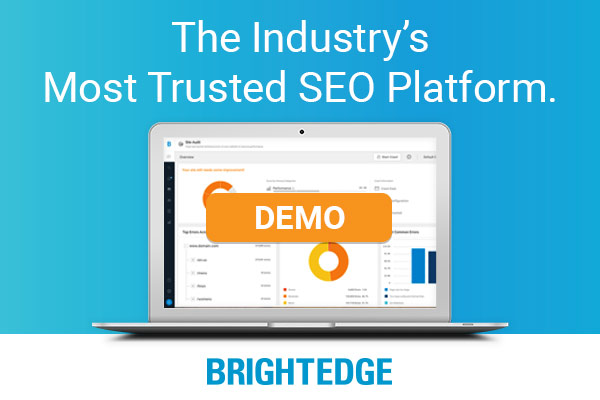As the internet has matured, so have the expectations of customers. They expect websites to load within seconds and they want to start interacting with them nearly instantly. Google has found that 53 percent of mobile users will click off a site that does not load within 3 seconds, which means that failing to optimize your site for page speed can result in a serious reduction in leads and customers that your website pulls in. Brands that want to improve their site speed, however, need to make sure they fully understand what both users and Google speak about when they reference page load speed and what they can do about it.
We wanted to help our community better understand what Google wants to see from fast-loading pages. Here is what you need to know.
This is what Google measures when they consider page speed
When you test your site load speed through Google, you will see a report that measures a number of different metrics that all pertain to how quickly your site loads. Let's quickly review the page speed terms below.
- Server response: The server response time measures how long it takes for the server to respond to the request for the page. This is also known as the Time to First Byte.
- First contentful paint: The first contentful paint measures when the first content begins to appear on your site. This might include the images or text, for example.
- First meaningful paint: The first meaningful paint, on the other hand, measures how long it takes content to appear on screen that actually helps the viewer. It measures the loading time of the most important content on the page. Since this metric indicates when people can actually start using the website, it is an important one to monitor.
- Speed index: The speed index looks at the average amount of time needed to display the visual parts of your site.
- First CPU idle: The first CPU idle refers to the moment when people can begin to interact with the web page. Again, since the focus with page speed lies in providing customers with a solid user experience, knowing precisely when they can start interacting with the page is important.
- Time to interactive: The time to interactive looks at how long it takes for the page to be fully interactive–meaning that customers can engage with the material and the page has stopped loading.
- Max potential first input delay: The max potential First Input Delay measures the worst input delay users might experience. The FID refers to the delay that occurs between when a customer engages with something on the page and the website responds to that command.
Google uses these various metrics to gain a better understanding of how your site performs in those areas, and the user experience you deliver for customers. You will want to minimize the time needed for each of these metrics, focusing particularly on the ones that have the clearest impact on the user experience.
Keep in mind that a number of factors will impact your page load speed, including the content you have on the page, the use of a CDN, and even your CMS. Therefore, you also have a variety of strategies at your disposal to help you take steps to improve your page load speed. Here are a few techniques to help you begin to improve this important factor, providing a better experience of users and increasing your chances to boost your rankings on the SERP.
Google page speed is impacting your rankings
To understand why it has become so important for brands to focus on building speed in their websites, you must also understand why speed has such an impact on rankings. Remember that Google’s own studies show that 53 percent of people will click off mobile sites that take longer than 3 seconds to load. This means that these sites do not provide users with a good experience. It also indicates that these sites will have high bounce rates from these people clicking off as well as low engagement metrics.
Google also also said since 2010 that they will include site loading speed as a factor in their algorithm. By forcing sites to pay attention to their loading process they work to create an improved experience for users, which in turn keeps people coming back to Google for their search engine.
Google has not said which page speed metric in particular they use in their algorithm, but since they give sites insight on all of them, it is likely that they use a combination of the different metrics. Therefore, brands want to make sure that they improve site performance in each area.
Here are nine strategies that can help you improve your page load speed.
Increase Rank And Decrease PageSpeed
Improving your page speed with these insights
- Pay attention to your JavaScript
- What are lazy-loading images and how do they work?
- How does a CDN help page speed?
- Why cache your images?
- Should you compress your images?
- Which image file type to use?
- How does your CMS impact page speed?
- Do hosting services make a difference for page speed?
- Why and how to remove your excess CSS?
1. Pay attention to your JavaScript
Before Google can render a page, it has to go through a process known as parsing the HTML. If it encounters a script, it has to pause its parsing of the HTML so that it can run the script before it continues. If the script contains a command for an external source, this might even include waiting for this source to download before it can continue its initial processes. This can drastically slow down the load time of a site.
You want to minimize the amount of any JavaScript that might block the HTML, particularly any external sources. You can also make your JavaScript run asynchronously, which means that the JavaScript will not stop the process of parsing the HTML. This enables the site to continue loading without pausing for the JavaScript. Other site owners find it more beneficial to make the process speed up by reducing the latency of the JavaScript process through inlining the code. You can also simply defer the JavaScript loading by directing it to load after the page loads.
You should review all of the scripts each quarter and be sure to remove any that are no longer in use. The script can slow down your page even if the function it serves is no longer used by the team, for example, a retargeting tracking pixel for a service that has not ad spend or inventory.
Lastly, you can make a decision to remove a feature or function from your site stack in favor of faster loading pages. We did this for 3 functions at BrightEdge and saw a marked increase in page load speed.
2. What are lazy-loading images and how do they work?
When you lazy load a portion of your site, such as the images, you use code to make sure that they load asynchronously and only if the user navigates far enough down to require them to load. This can boost your load speed by allowing the core parts of the site to load before trying to load the images. If your page has a lot of images, such as a photographer’s website, it also means that your website does not waste time trying to load all of the images on the page. Only the images that the visitor reaches in their scrolling bother loading. Altogether, this reduced time and energy spent trying to load the images will help to improve your page load speed.
Of course, with lazy loading images, you will also have to pay close attention to your user experience. If customers have to wait for every image to load as they scroll through the page, that will create a negative impression. Fortunately, there are strategies that can reduce the negative impact.
For example, you can set a threshold value that will start loading the image a little bit before the user reaches that particular image while scrolling down. Other site owners will find it helpful to use a placeholder that blends well with the rest of the page to keep the site looking neat and engaging while the image loads.
3. How does a CDN help page speed?
Your CDN stands for your content delivery network. Using one can improve your page load time. Specifically, it will figure out where your visitor is geographically, and then have your site’s resources get served to this particular user from a server that is as close as possible to them. This can reduce the amount of time needed to send the information from the server to the browser.
4. Why cache your images?
When you cache your image, you save some of the important parts of your site in the user’s browser. When this particular person then returns to your site at a later time, this information has already been saved, and thus the site loads quickly.
This can be immensely beneficial for return users as they will see a quick-loading site. For brands that have an involved buyer’s journey, this will benefit the page as you will create a positive user experience and a good impression on these potential customers as they continue to visit your site.
This does not have a particular benefit for first-time users, however, and thus should not be the only strategy you employ to improve your page load speed.
5. Should you compress your images?
Images often get uploaded to sites larger than they need to be, but the larger the image, the more time it takes to load. Fortunately, a number of image optimization tools exist to help you get the most out of your images.
You can use image optimization tools to compress your image. The type of compression you use and size you decide on for your file will depend upon a number of different factors, including the type of image and its purpose on the website.
Adjust your images to their actual size on the site and reduce the file weight with compression to less than 50 kb per smaller image and less than 100 kb for larger images such as headers and background images.
6. Which image file type to use?
In addition to compressing your image, you can also enhance the speed of your site by looking at the type of image file you use. Generally, you will come across three main options: JPEG, PNG, and GIF.
The image file that suits your needs best will vary based on the purpose of the image. Logos, for example, may work well in GIF, which also offers a small file size. GIF has a small file size, but also limited color options. Photographs, on the other hand, will do best with a JPEG. A high-quality image that also needs to easily scale may work best in PNG.
7. How does your CMS impact page speed?
Different CMS options can help to benefit your page load time as well. Depending upon the CMS you use, you will find that some include a variety of tools that can help you get the most out of your website. These tools may help you with a variety of optimization best practices to build a faster site. For example, they may help you with your image optimization. Look at the optimization strategies offered with your particular CMS to see what might be available to help your strategy.
When you first start experimenting with your CMS, however, you want to carefully evaluate the tools available within your CMS. See how they compress images and do other optimization strategies. Compare them to other tools available to make sure your CMS helps you maximize your page load time.
8. Do hosting services make a difference for page speed?
Some hosting clouds will help pages load faster than others. Generally, the cheaper your hosting cloud is, the slower it will load– although that is not a completely cemented rule.
Consider, however, that when you pay a low price for your cloud hosting, potentially millions of others are doing the same thing. With all of those websites using the same resources, it can slow down your page load speed. Paying a bit more for a premium host or a dedicated server can help your page load speed. Those who find that little else helps them improve their page load speed might want to consider changing their hosts.
9. Why and how to remove your excess CSS?
You want to keep your code as clean as possible. The cleaner the code that runs your website, the easier it is for your page to load as there will be fewer commands to be carried out. If you still have parts of your code in your site for features that you no longer display, this will needlessly slow down your page’s ability to load. Look for other sources of potential excess code as well. The less information that is needed to fully upload your site, the faster it will run.
What to do if Google’s suggestions do not improve page load speed as much as Google predicted?
If you implement the suggestions that appear after you test your site speed on PageSpeed insights, but your site speed does not improve as much as Google said it would, do not be alarmed. This happens to many site owners.
You can begin by using a few different page speed testing tools. This can help you gain a more balanced look at what might cause the page speed to not improve as much as predicted. You might also get alternative suggestions about steps you can take to improve your page loading.
In general, you simply want to take the necessary steps to ensure that the coding and processes that go on behind the scenes of your website are fully optimized to provide your users with the best user experience. If you have carefully evaluated your code, content, host, and CDN and ensured that you have optimized them all to keep your site running as smoothly as possible, you will be on your way to creating a fast, effective site for users.
Testing your page speed often
Given the importance of page speed for site ranking, brands want to make sure that they regularly record data points on their page load times. Typically, you want to make sure that you measure your site speed at least once per month during regular website activities. If you are going through the process of optimizing for page speed, adding new content– particularly visual content, or making other large changes to your page, you will want to check much more frequently. In many cases, you may want to check as often as every day as your page is updated and optimized.
Page speed is something that you want to collect regular data on. This will help you detect any problems before they impact your long-term site rankings and reputation. It will also allow you to see how well your optimization efforts help your page.
Working on technical page speed issues
Marketers, for most brands, do not have total control over their website. Instead, they must coordinate their efforts with other professionals who help to write the code and design the site for users. When it comes to improving page speed, therefore, these other teams must be involved in the process.
You will want to connect with your web developers, who can help with the back end code – specifically the JavaScript and CSS. They can help you optimize the code, including minimizing any bloated code, minimizing slow downs from JavaScript, and ensuring the site loads as quickly as possible.
You also will need to coordinate with those who work with your site operations. They can help you ensure that your site can cache on the browsers of returning users. They can also help you troubleshoot page speed issues related to hosting and your server.
The biggest Google page speed mistakes site owners make
- Large images added by someone without the technical skills needed to understand image size and file weight. Make sure that people tasked with adding images to your website understand the impact of large images on slow loading speeds and how they can correct the issue.
- Trying to save money with your hosting. Remember that hosting is not an area where you want to cut corners. A host that is also trying to process millions of other websites can easily get overwhelmed and slow down. Do not overlook this potential issue.
- Redirecting users too many times. As you build and restructure your site, be conscientious of how often you remove pages and redirect users. Each redirect will add loading time for the user, so you want to use this as minimally as possible.
- Not caching the site. Caching your site is an easy way to create a quick-loading experience for users. Do not miss this opportunity to help those returning to your site.
- Not paying attention to your content management system. Different content management systems offer different benefits, and sometimes they can result in slower sites. Pay attention to your page speed and do not be afraid to move your content from one CMS to another if the situation warrants it.
Page speed can help you get your material in front of your customers and ready to compete in the modern digital world. Customers want to see pages and websites that are ready to use, and they have no patience for sites that take a while to fully open. Optimizing your site for fast page speed loading will help you capture more leads and improve your standing on the SERP.


